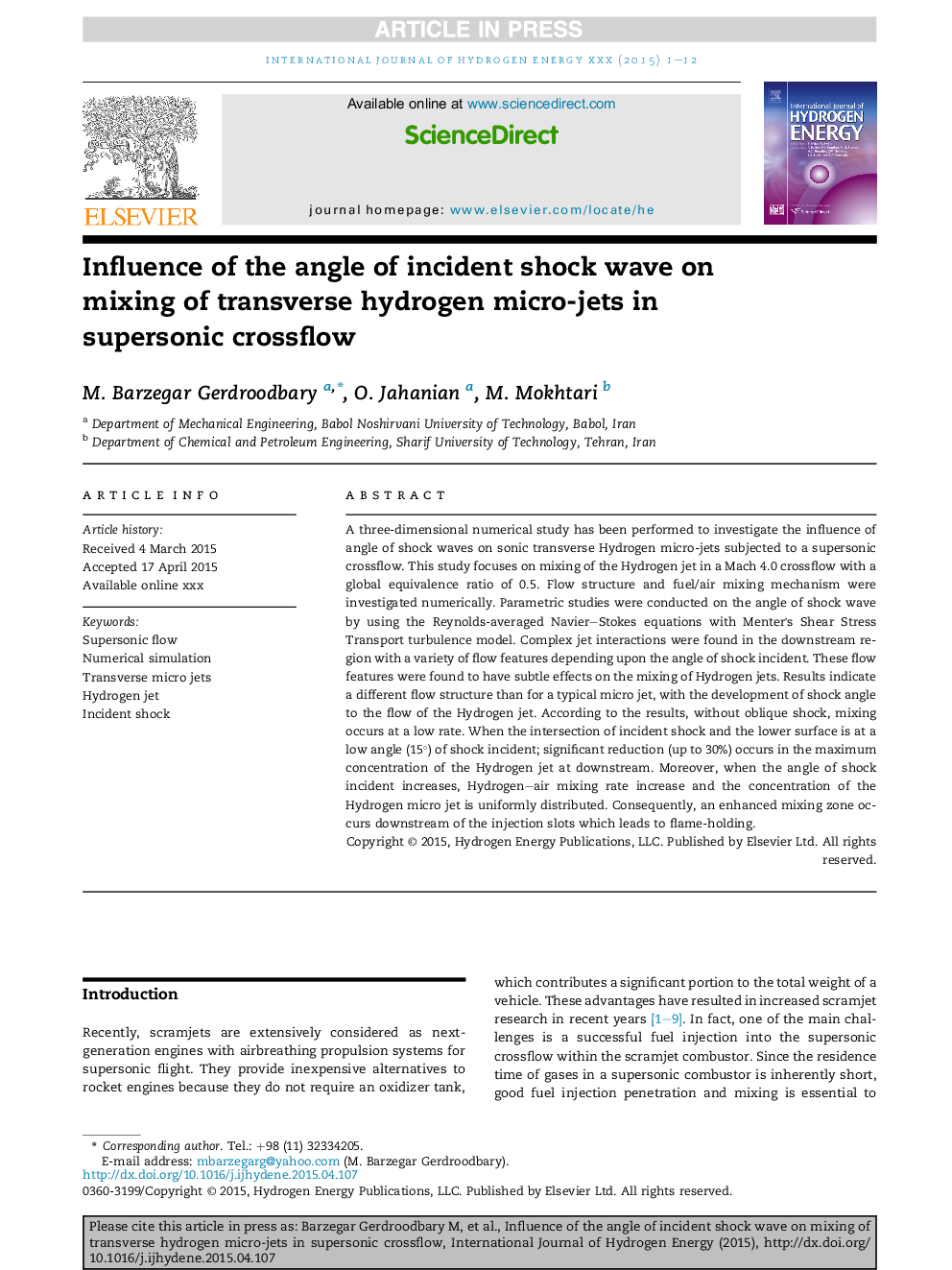| Article ID | Journal | Published Year | Pages | File Type |
|---|---|---|---|---|
| 7715371 | International Journal of Hydrogen Energy | 2015 | 12 Pages |
Abstract
A three-dimensional numerical study has been performed to investigate the influence of angle of shock waves on sonic transverse Hydrogen micro-jets subjected to a supersonic crossflow. This study focuses on mixing of the Hydrogen jet in a Mach 4.0 crossflow with a global equivalence ratio of 0.5. Flow structure and fuel/air mixing mechanism were investigated numerically. Parametric studies were conducted on the angle of shock wave by using the Reynolds-averaged Navier-Stokes equations with Menter's Shear Stress Transport turbulence model. Complex jet interactions were found in the downstream region with a variety of flow features depending upon the angle of shock incident. These flow features were found to have subtle effects on the mixing of Hydrogen jets. Results indicate a different flow structure than for a typical micro jet, with the development of shock angle to the flow of the Hydrogen jet. According to the results, without oblique shock, mixing occurs at a low rate. When the intersection of incident shock and the lower surface is at a low angle (15°) of shock incident; significant reduction (up to 30%) occurs in the maximum concentration of the Hydrogen jet at downstream. Moreover, when the angle of shock incident increases, Hydrogen-air mixing rate increase and the concentration of the Hydrogen micro jet is uniformly distributed. Consequently, an enhanced mixing zone occurs downstream of the injection slots which leads to flame-holding.
Related Topics
Physical Sciences and Engineering
Chemistry
Electrochemistry
Authors
M. Barzegar Gerdroodbary, O. Jahanian, M. Mokhtari,
